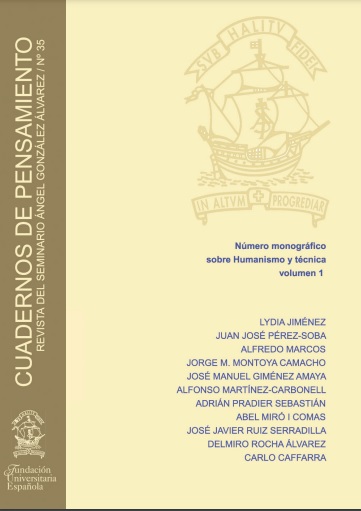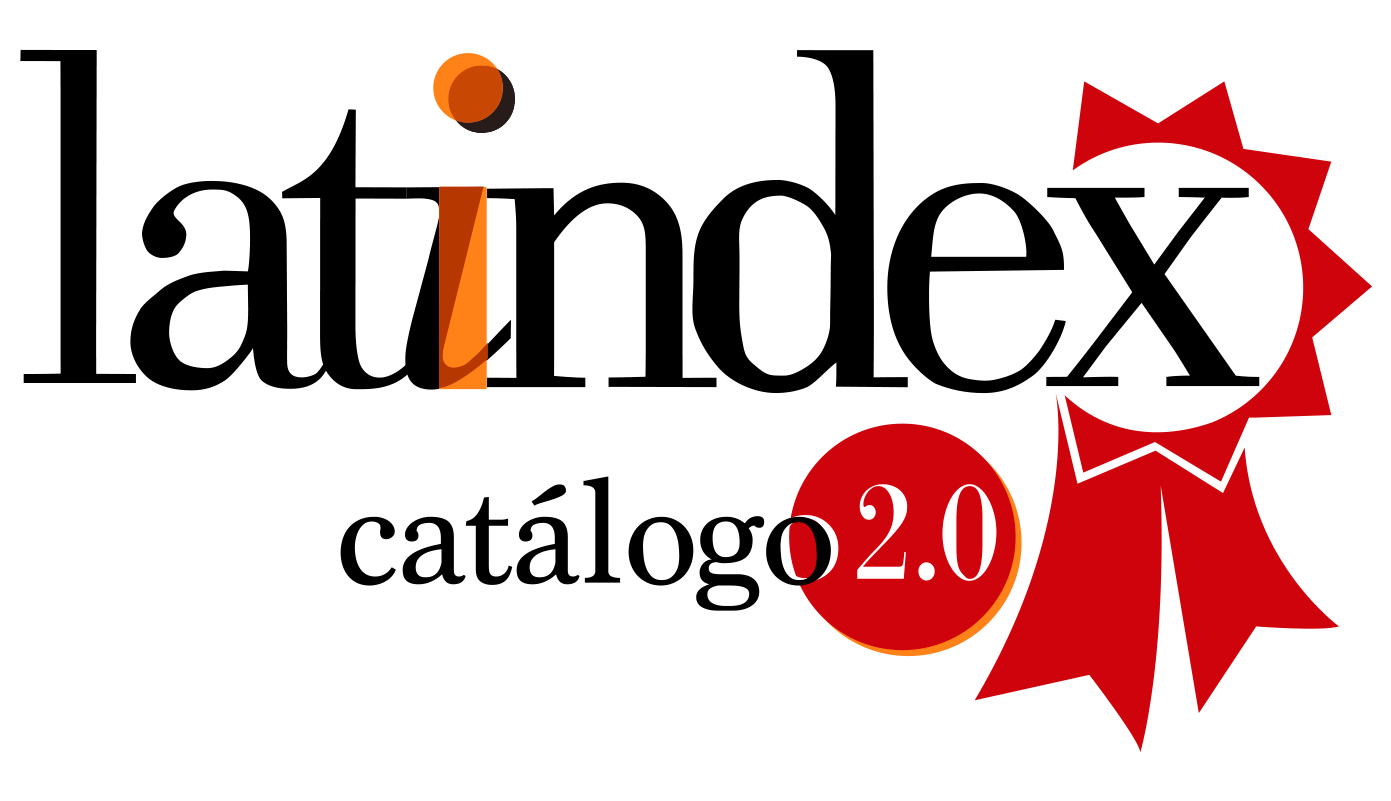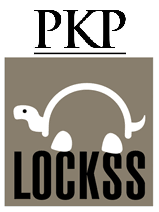Technology and power: the modern concealment of the natural ends of the tekné
DOI:
https://doi.org/10.51743/cpe.323Keywords:
friendship, justice, nature, technique, technologyAbstract
One of the main characteristics of the development of modernity has been the concealment of the natural ends of technology. In this article we delve into that denaturalization, which has made technology an element capable of being at the service of a dehumanizing power. We maintain that this process has led to the dimming of a natural vision of the human being that avoids basing the integration of his life with the good of society. Therefore, a gap is currently perceived between the natural goals of humanity and the technical elements that can only be corrected by strengthening the links within a community. With this framework, we analyze the problems that derive from the modern approach from the anthropological, ethical and
sociological perspectives.
Downloads
Global Statistics ℹ️
|
854
Views
|
516
Downloads
|
|
1370
Total
|
|
References
Aristóteles. (1995). Física. Gredos.
Carr, N. (2011). Superficiales: ¿qué está haciendo Internet con nuestras mentes? Taurus. DOI: https://doi.org/10.12795/AdMIRA.2011.01.11
Curry, P. (2015). Remarks for Tolkien event at the Weston Bodleian Library. En The Lord of the Rings: Tolkien’s legacy, 29 octubre de 2015 (http://www.patrickcurry.co.uk/papers.htm). Weston Bodleian Library.
Esquirol, J. M. (2011). Los filósofos contemporáneos y la técnica: de Ortega a Sloterdijk. Gedisa.
Esquirol, J. M. (2015). La resistencia íntima. Acantilado.
Esquirol, J. M. (2019). El ser humano es realmente humano cuando alcanza la madurez. XLSemanal, (1647), pp. 38-39.
Fernández, A. (2012). Teología dogmática II. BAC.
Francisco. (2015). Encíclica “Laudato si” sobre el cuidado de la casa común.
Fuentes, J. B. (2002). La (posible) paradoja de la “intervención psicológica” en el contexto de la cultura católica hispanoamericana”. Papeles del Psicólogo, (83) (http://www.papelesdelpsicologo.es/resumen?pii=892).
Fuentes, J. B. (2009). La impostura freudiana: una mirada antropológica crítica sobre el psicoanálisis freudiano como institución. Encuentro.
Galván, J. M. (2003). On Technoethics. IEEE Robotics and Automation Magazine, (10), pp. 58-63.
Galván, J. M. (2010). Protagonistas. La clave no es la tecnología, sino el hombre. La Nación, (https://www.lanacion.com.ar/tecnologia/la-clave-no-es-la-tecnologia-sino-el-hombre-nid1319477/).
García-Baró, M. (2009). Sócrates y herederos: introducción a la historia de la filosofía occidental. Sígueme.
Giménez Amaya, J. M. (2020). La universidad en el proyecto sapiencial de Alasdair MacIntyre. EUNSA.
Graham, M., Dutton, W. (2019). Society and the Internet: How Networks of Information and Communication are Changing. Oxford: Oxford University Press. DOI: https://doi.org/10.1093/oso/9780198843498.001.0001
Gracia, D. (2004). Como arqueros al blanco: estudios de bioética. Triacastela.
Harari, Y. N. (2016). Homo Deus: breve historia del mañana. Debate. DOI: https://doi.org/10.17104/9783406704024
Harari, Y. N. (2018). 21 lecciones para el siglo XXI. Debate,
Hildebrand, D. von. (2006). Moralidad y conocimiento ético de los valores. Cristiandad.
Horkheimer, M. (1969). Crítica de la razón instrumental. Sur.
Horkheimer, M., Adorno, T. W. (1994). Dialéctica de la Ilustración: fragmentos filosóficos. Trotta,.
Laín Entralgo, P. (1971). Técnica y humanismo en la formación del hombre actual. Asclepio: archivo iberoamericano de historia de la medicina y antropología médica, (23), pp. 79-93.
Lanier, J. (2018). Esta mierda nos corrompe a todos. XLSemanal, (1622), pp. 32-36.
Lecourt, D. (2011). Humain posthumain. PUF. DOI: https://doi.org/10.3917/puf.lecou.2011.02
Llano, A. (1981). El futuro de la libertad. EUNSA.
Llano, A. (1987). Ciencia y vida humana en la sociedad tecnológica. En N. López Moratalla y otros (Eds.). Deontología biológica (pp. 125-134). Universidad de Navarra.
Lipovetsky, G. (2004). El imperio de lo efímero: la moda y su destino en las sociedades modernas. Anagrama.
Lombo, J. A., Giménez Amaya J. M. (2013). La unidad de la persona: aproximación interdisciplinar desde la filosofía y la neurociencia. EUNSA.
Lombo J.A., Giménez Amaya, J. M. (2016). Biología y racionalidad: el carácter distintivo del cuerpo humano. EUNSA.
López Cambronero, M. (2019). La edad virtual: vivir, amar y trabajar en un mundo acelerado. Encuentro.
MacIntyre, A. (1987). Tras la virtud. Crítica.
Montoya Camacho J. M., Giménez Amaya, J. M. (2021). Encubrimiento y verdad: algunos rasgos diagnósticos de la sociedad actual. EUNSA.
Murillo, J. I. (1996). La teoría de la cultura de Leonardo Polo. Anuario filosófico, (29), pp. 851-867. DOI: https://doi.org/10.15581/009.29.29753
Murillo, J. I. (2006). Antropología. En C. Izquierdo, J. Burggraf y F. M. Arocena (Eds.). Diccionario de Teología, (pp. 29-49). EUNSA.
Newport, C. (2021). Minimalismo digital: en defensa de la atención en un mundo ruidoso. Paidós.
Ortega y Gasset, J. (1965). Meditación de la técnica. Espasa Calpe.
Ortega y Gasset, J. (2001). Historia como sistema. Biblioteca Nueva.
Ortega y Gasset, J. (2014). La rebelión de las masas. Alianza Editorial.
Platón. (1988). Diálogos vol.III. Fedón. Banquete. Fedro. Gredos.
Polo, L. (1993). Ética: hacia una versión moderna de los temas clásicos. Universidad Panamericana.
Polo, L. (1996). Sobre la existencia cristiana. EUNSA.
Polo, L. (2016). Presente y futuro del hombre. En A. González Basterreche (Ed.). Quién es el hombre: un espíritu en el tiempo. Presente y futuro del hombre. EUNSA.
Ruiz Retegui, A. (1999). Pulchrum: reflexiones sobre la belleza desde la antropología cristiana. Rialp.
Sánchez-Migallón, S. (2015). Ética. EUNSA.
Schroeder, R. (2018). Social Theory after Internet: Media, Technology, and Globalization. UCL Press. DOI: https://doi.org/10.2307/j.ctt20krxdr
Shippey, T. A. (2001). J. R. R. Tolkien: Author of the Century. Harper.
Sloterdijk, P. (2001). El hombre auto-operable: sobre las posiciones filosóficas de la tecnología genética actual. Sileno, (11), pp. 80-91.
Sloterdijk, P. (2012). Has de cambiar tu vida: sobre antropotécnica. Pre-textos.
Spaemann, R. (2010). Personas: acerca de la distinción entre “algo” y “alguien”. EUNSA.
Trapiello, A. (2015). La gente no piensa lo que dice, sino lo que le van a contestar. Europa Press (https://www.europapress.es/cultura/libros-00132/noticia-trapiello-contra-redes-sociales-gente-no-piensa-dice-le-van-contestar-20150720171245.html).
Velogig Marketing Científico (2020). 6 tecnologías que impulsan el futuro de las Redes Sociales (https://velogig.com/6-tecnologias-que-impulsan-el-futuro-de-las-redes-sociales/)
Uexküll,J. J. von. (1921). Umwelt und Innenwelt der Tiere, Springer.
Yepes Stork, R. (1996). Fundamentos de antropología: un ideal de la excelencia humana. EUNSA.
Zuboff, S. (2020). La era del capitalismo de vigilancia. Paidós.
Zuboff, S. (2021). Las grandes tecnológicas de Silicon Valley han dado un golpe de Estado contra la humanidad. XLSemanal, (1732), pp. 32-36.
Downloads
Published
How to Cite
Issue
Section
License
The author reserves the rights (copyright) of the published works, and the journal encourages and allows their reuse, from the preprint. The works are published in the electronic edition of the journal under a license "Creative Commons Attribution / Attribution-NonCommercial 4.0 International Public License - CC BY-NC 4.0", and can be copied, used, disseminated, transmitted and publicly exhibited.
The author / s partially transfer the property rights (copyright) of this work for the printed and online editions, provided that:
- The authorship and original source of its publication (magazine, publisher and URL of the work) is cited.
- Are not used for commercial purposes.
- The existence and specifications of this user license are mentioned.
It also declares to have respected the ethical principles of research and to be free from any conflict of interest.
"C.P.E." encourages the authors and the scientific community to the maximum promotion and dissemination of the works in their final version through:
1) Your list of contacts (emails) and social networks (Facebook, Twitter, LinkedIn ...).
2) Institutional repository of your University and public repositories (Mendeley, Cosis ...).
3) Scientific social networks (ResearchGate, Academia.edu, Kudos ...).
4) Personal or institutional website, blog, etc.
5) Google Scholar, ORCID, ResearchID, ScopusID, Dimensions, PlumX ...
6) Printed copies purchased directly and sent to specialists for reading and subsequent citation if appropriate.




















1.png)
1.png)

1.png)





.png)
.png)

.png)
1.png)
1.png)
